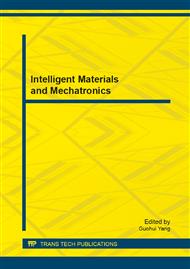p.3
p.9
p.14
p.20
p.25
p.31
p.37
p.41
Hyperbranched Polysiloxane Functionalized Graphene Oxide via Polyhydrosilylation
Abstract:
A novel method to functionalize graphene oxide (GO) by hyperbranched polysiloxane via polyhydrosilylation is reported, taking advantage of hyperbranched polysiloxane that possesses good properties such as low viscosity, good rheology, good solubility and high reactivity. The changes in GO surface morphology, chemistry and physical conditions at different stages are characterized by Fourier-transform infrared spectra (FT-IR), X-ray photoelectron spectroscopy (XPS) and Transmission electron microscopy (TEM). XPS analysis shows that the oxygen content of GO is 29.90% and the silicon content of hyperbranched polysiloxane grafted graphene oxide (HBPGO) is 18.66%. The results indicate that hyperbranched polysiloxane is successfully grafted onto the surface of GO and this novel nanostructure may have potential applications in composites.
Info:
Periodical:
Pages:
3-8
Citation:
Online since:
November 2013
Authors:
Price:
Сopyright:
© 2014 Trans Tech Publications Ltd. All Rights Reserved
Share:
Citation:



